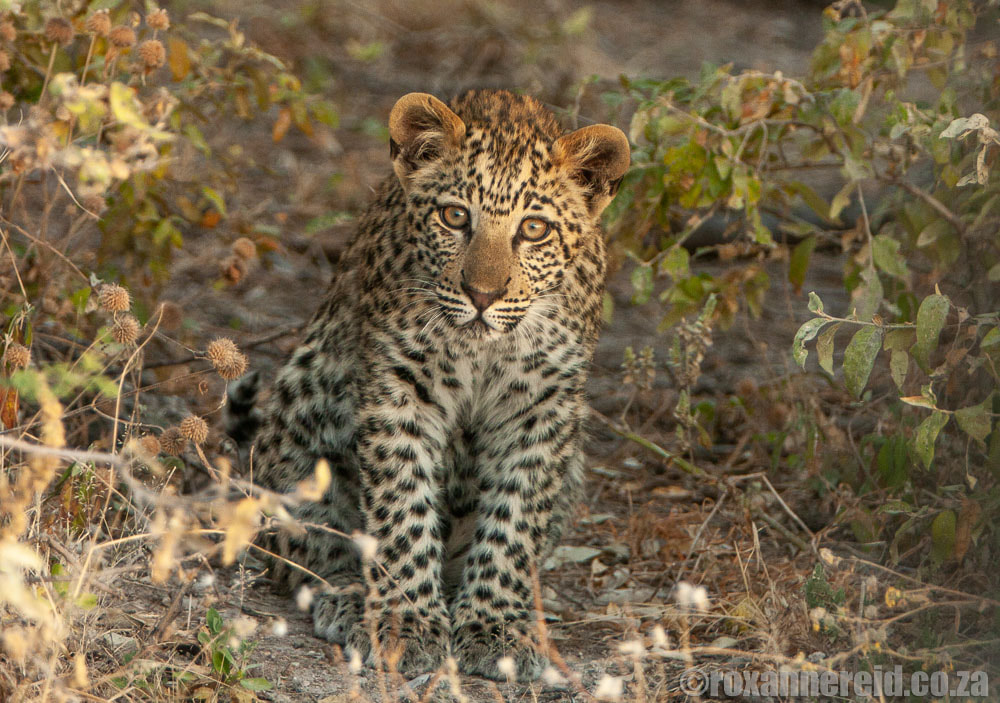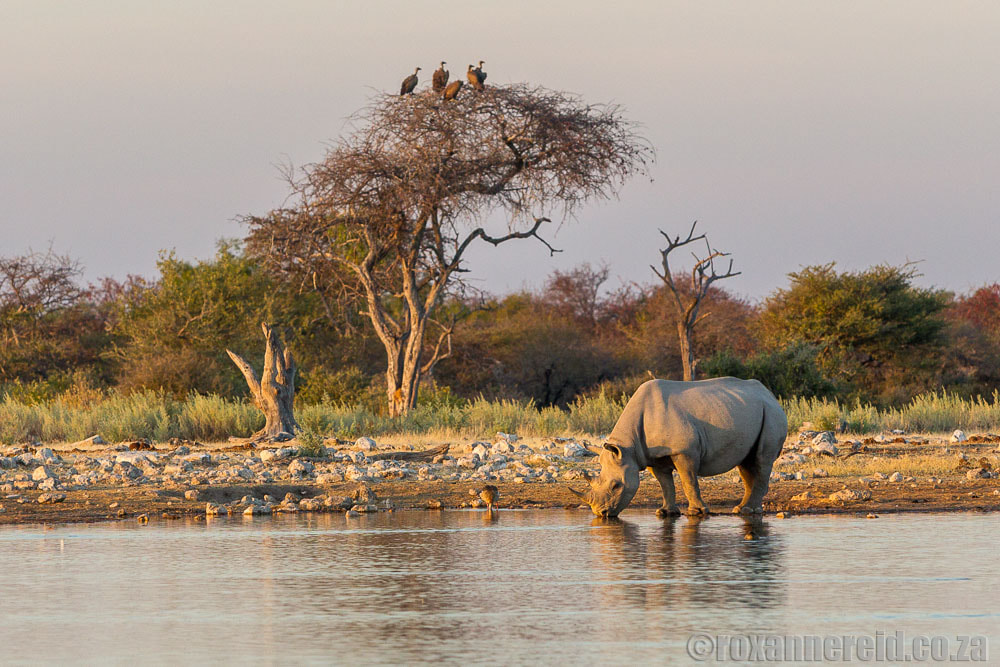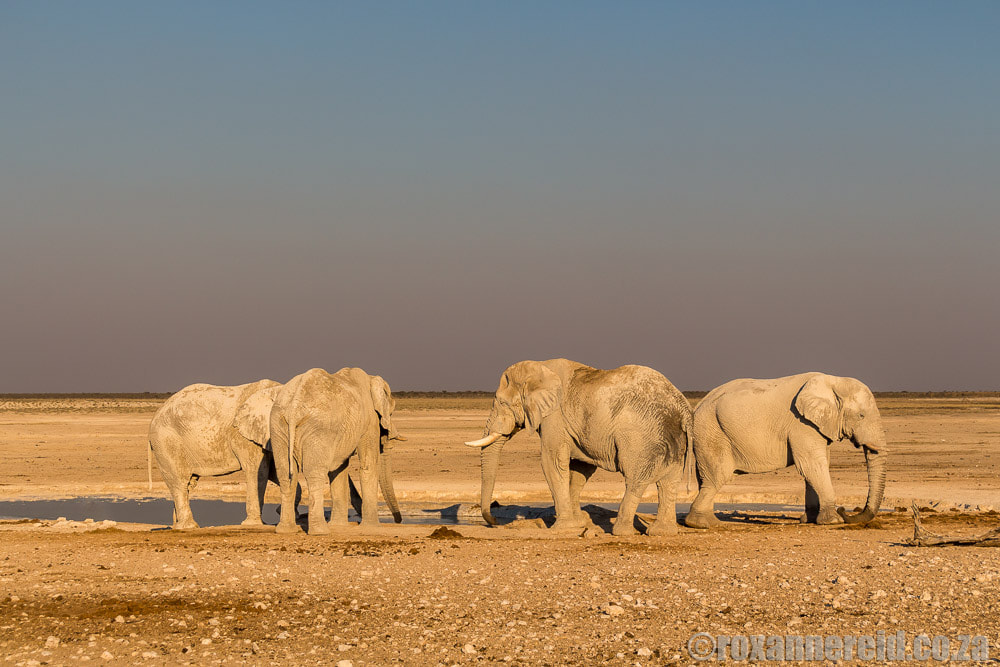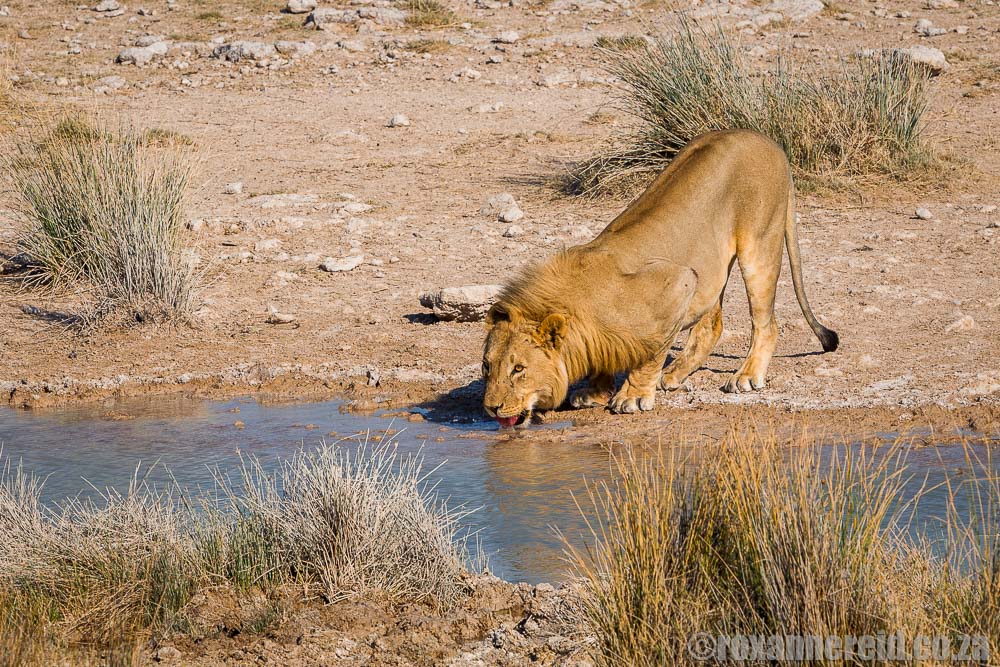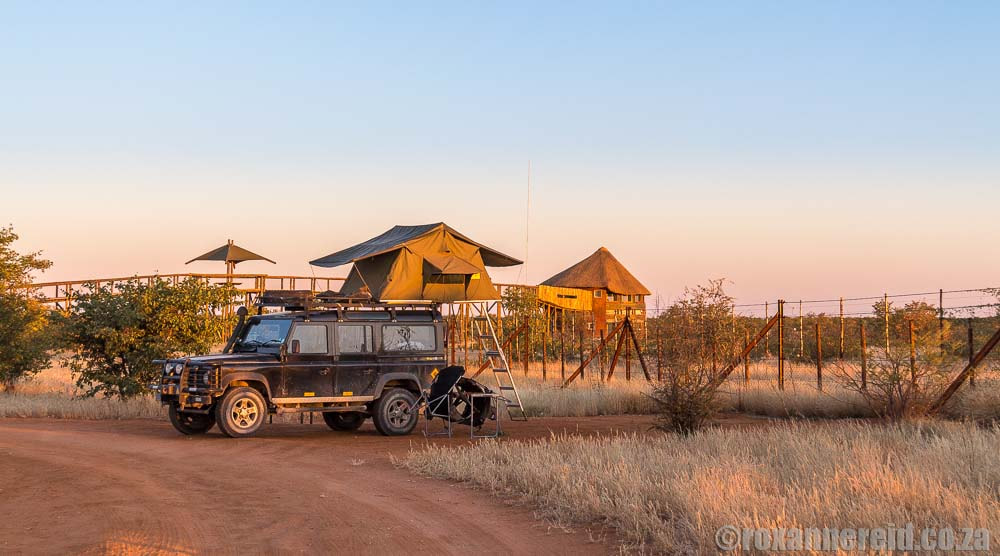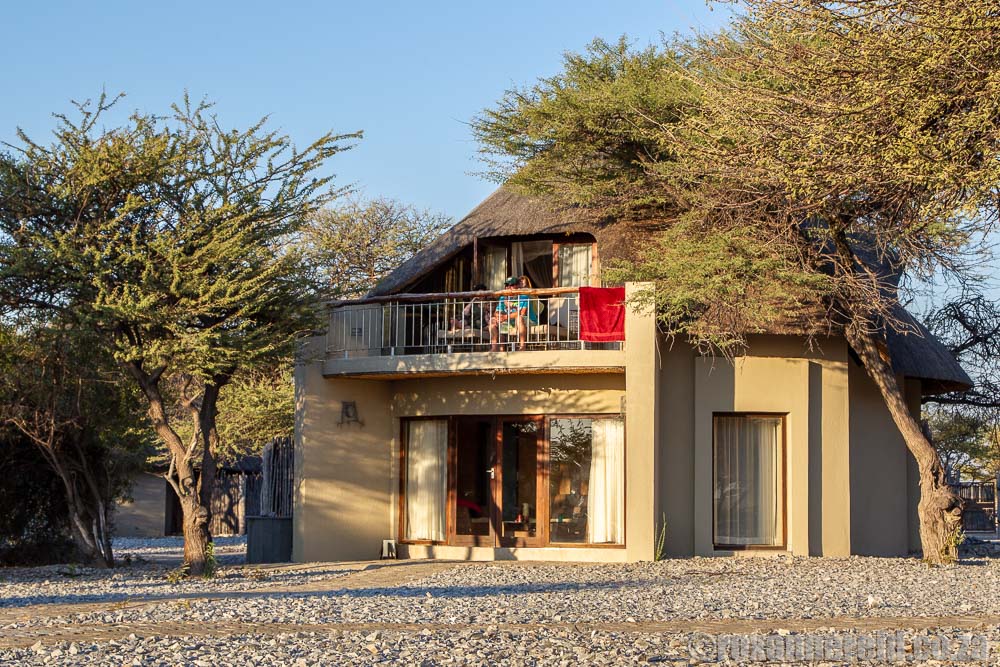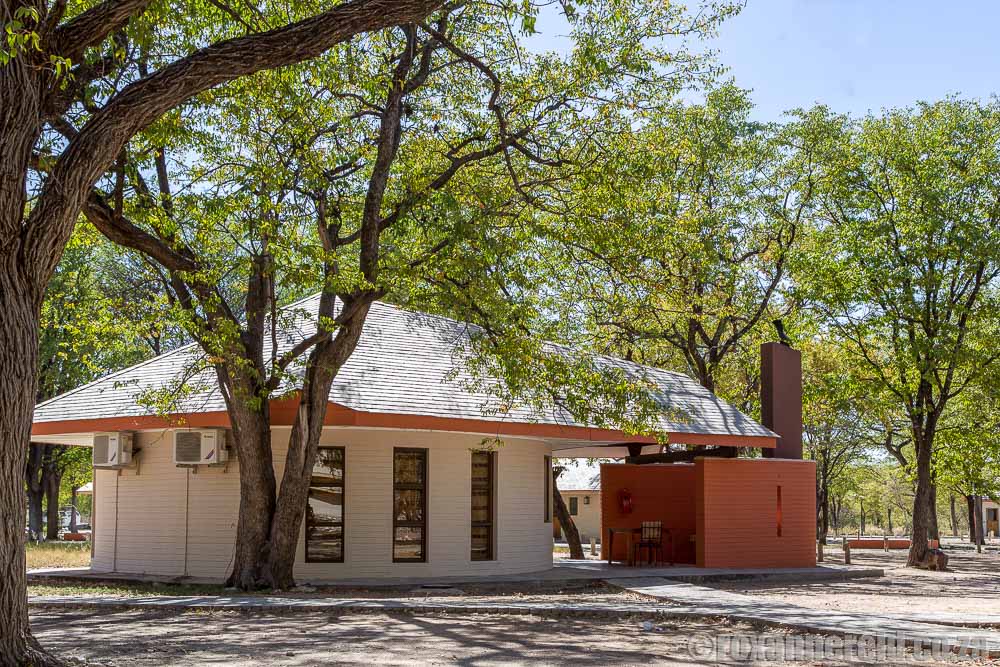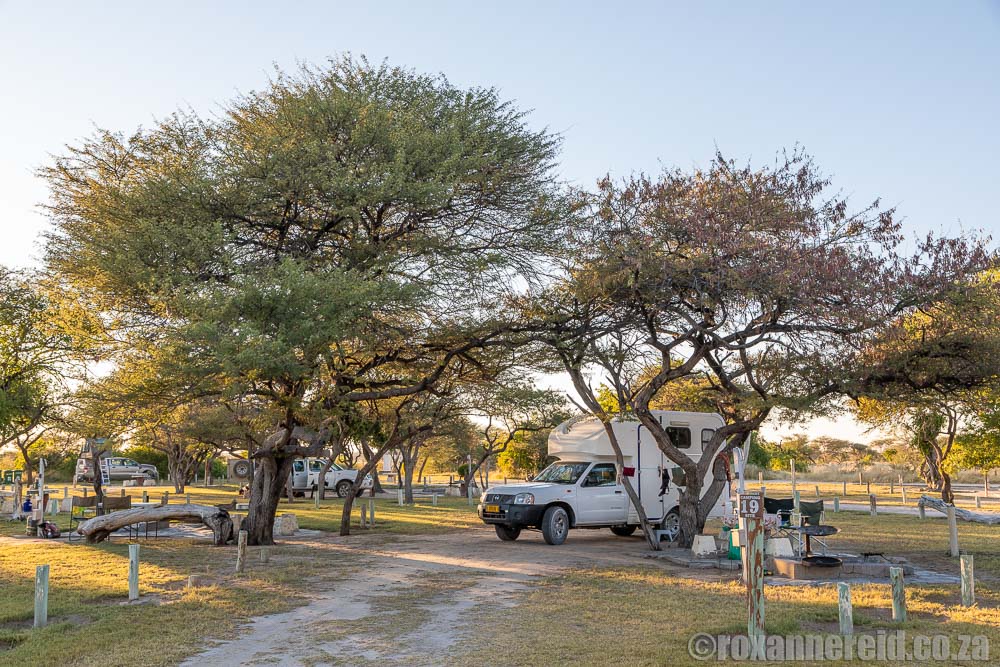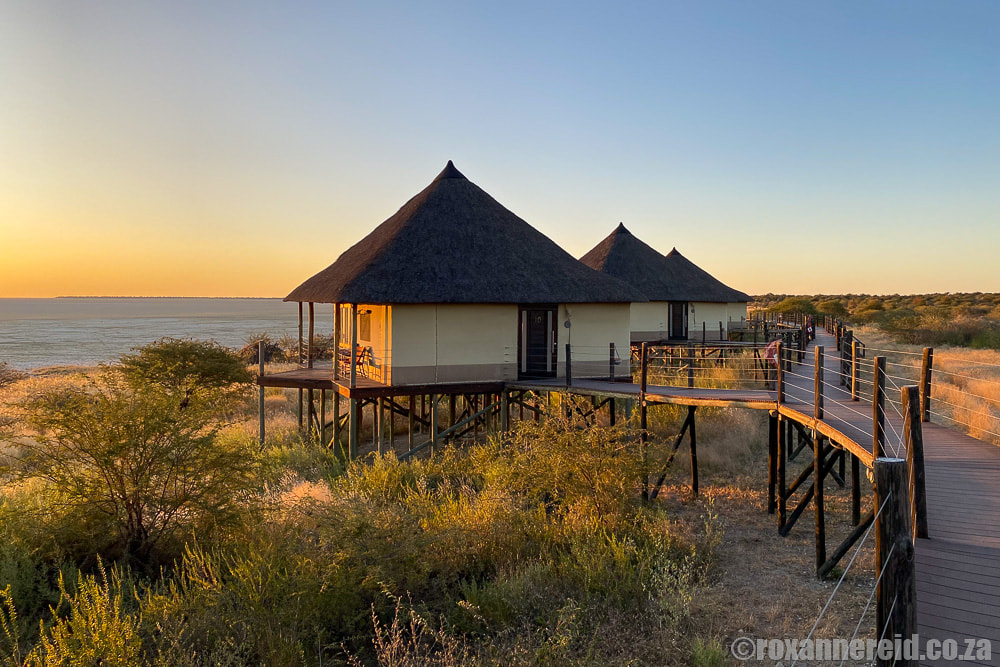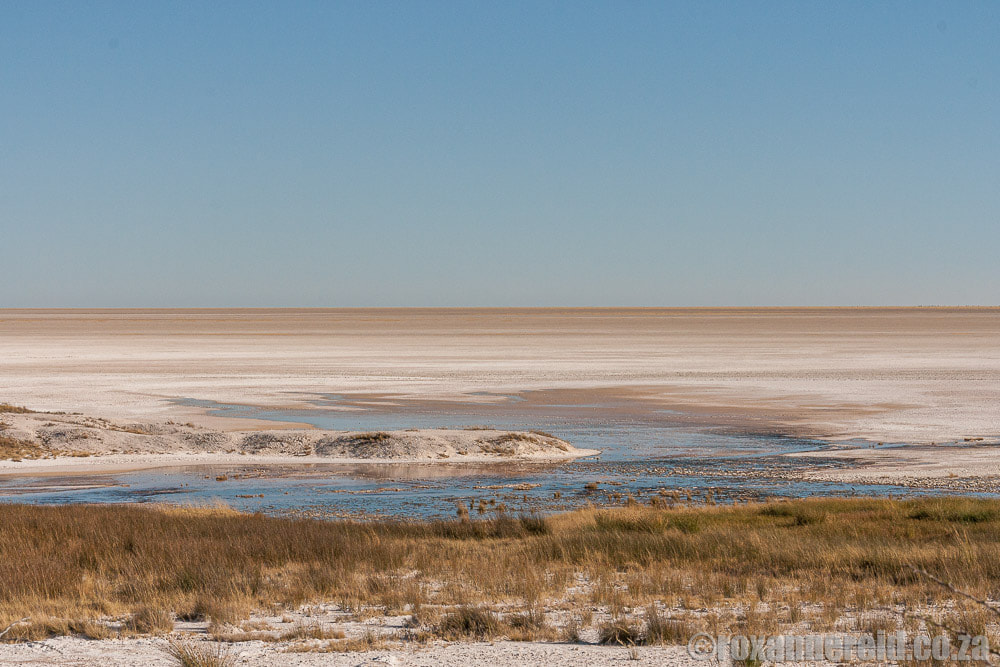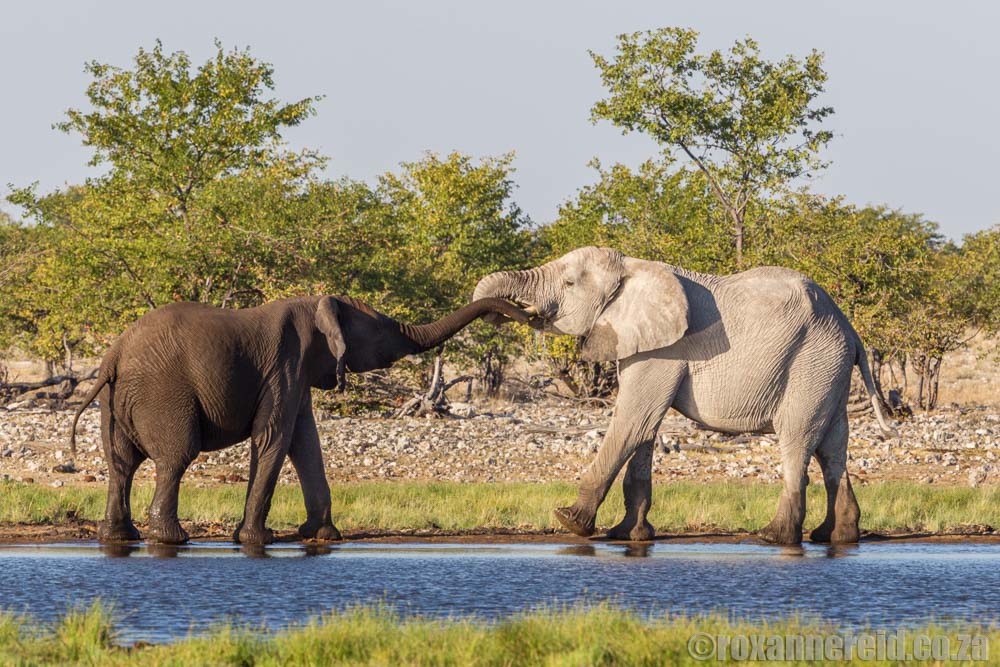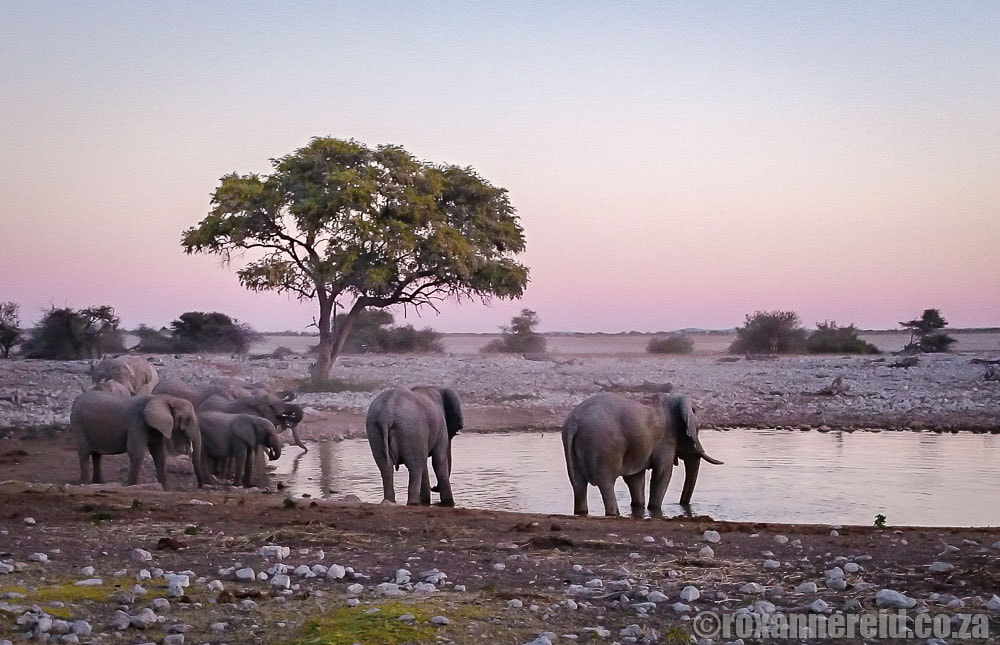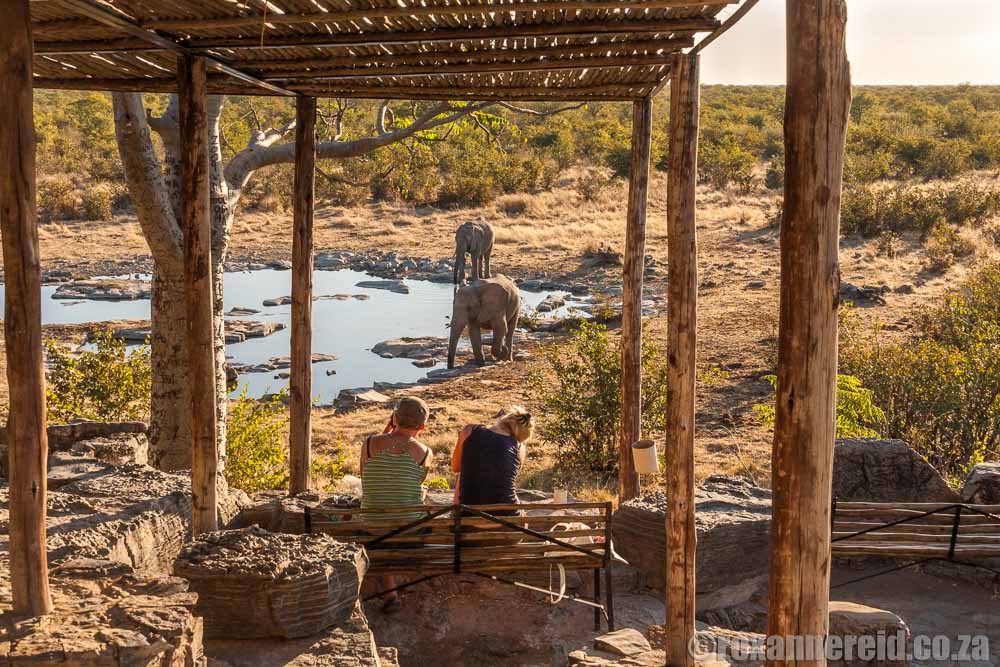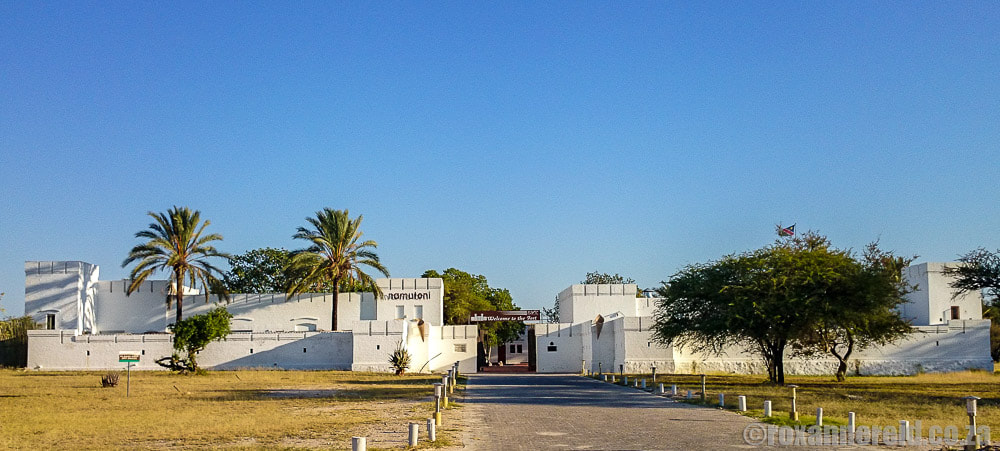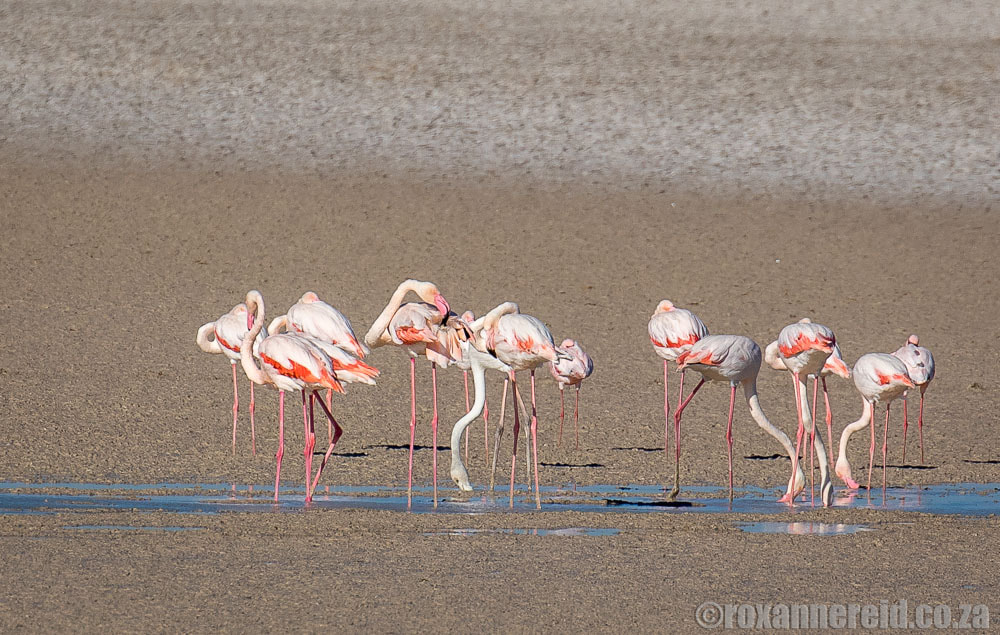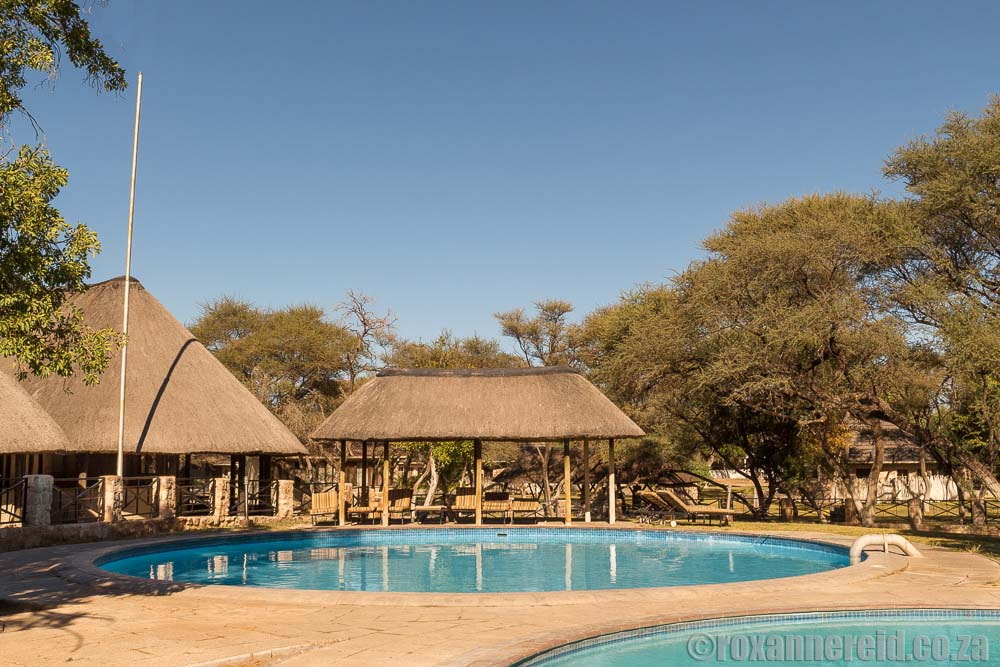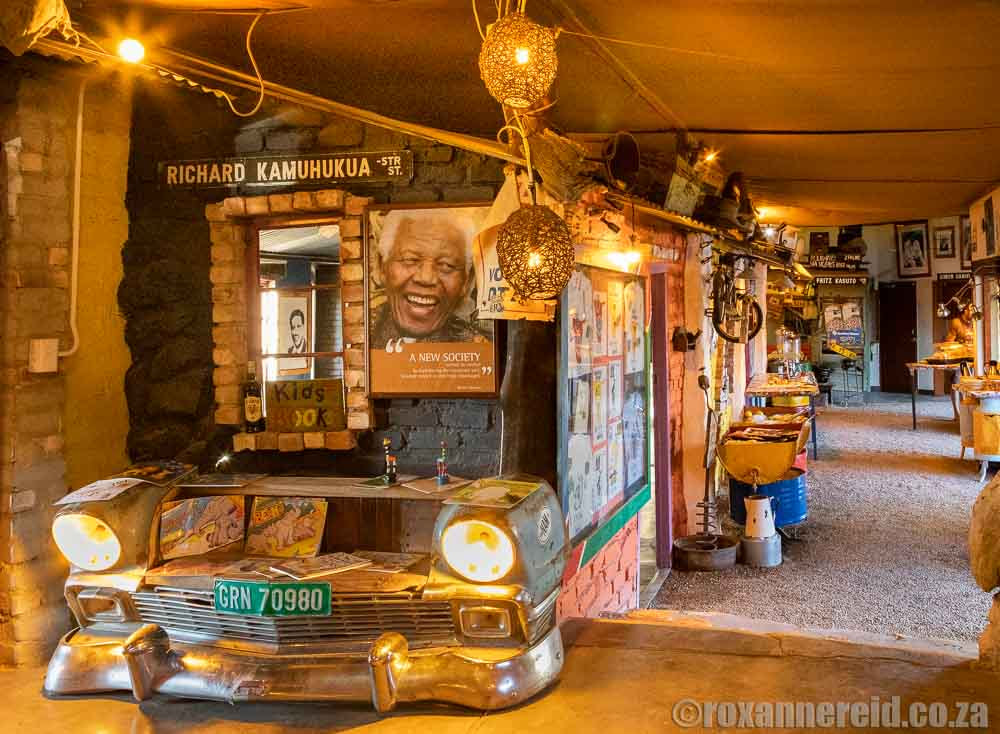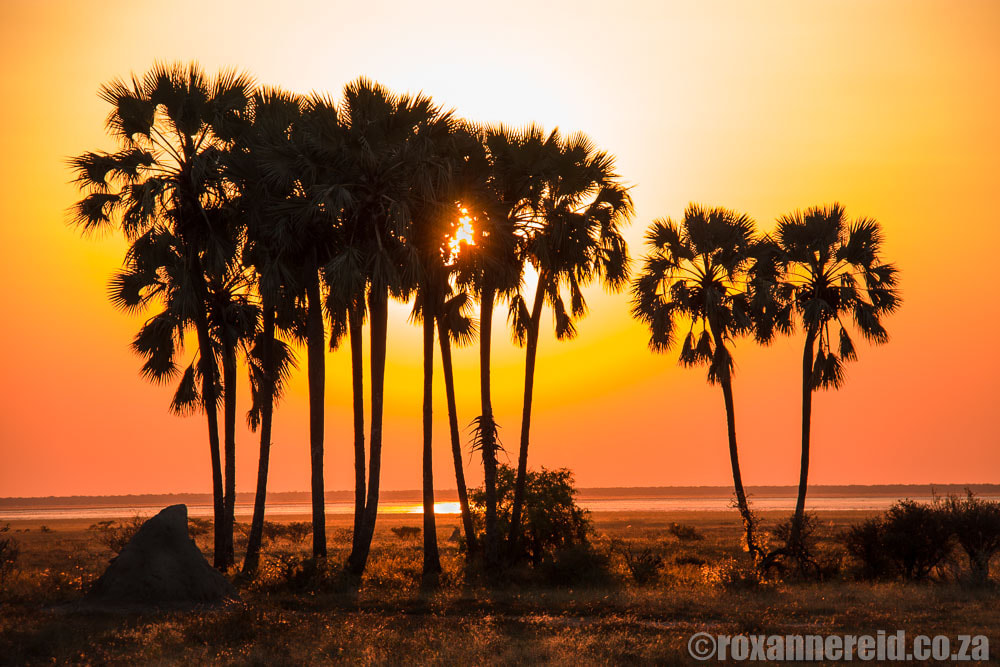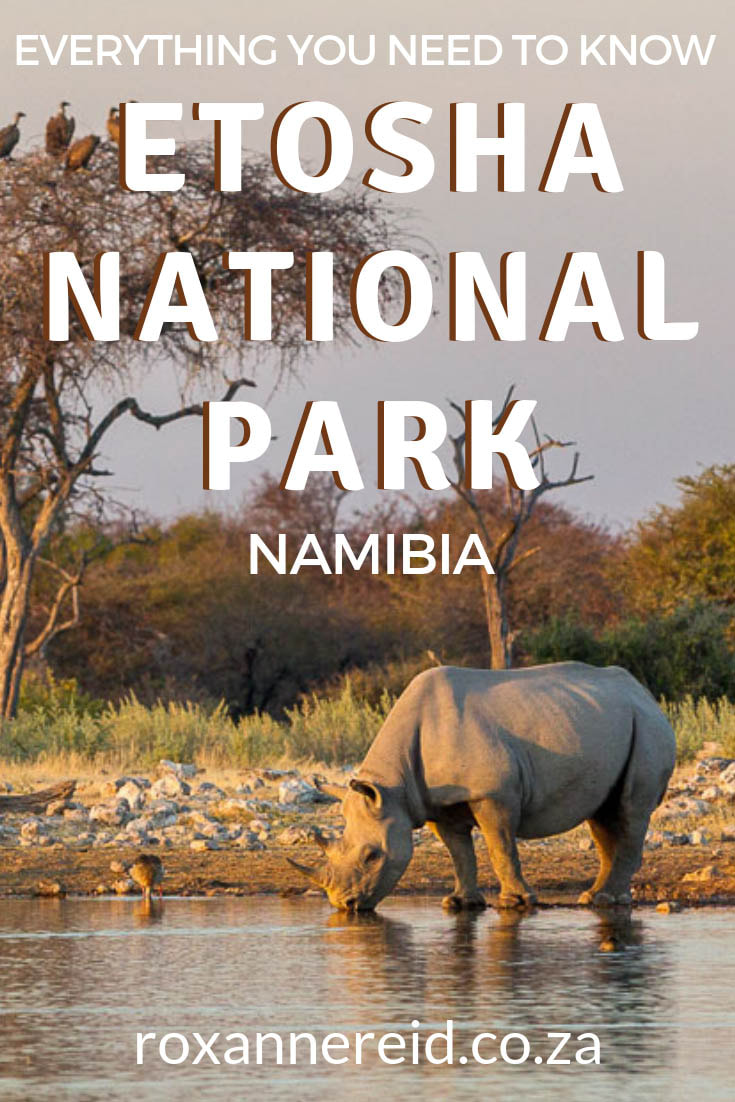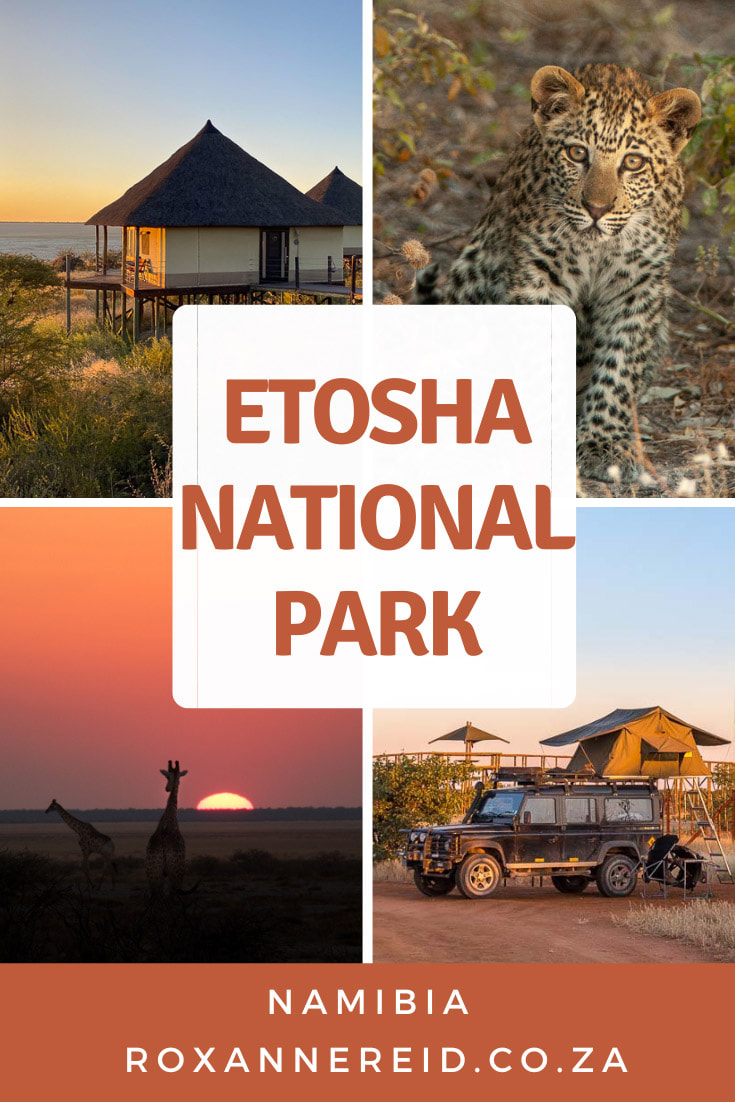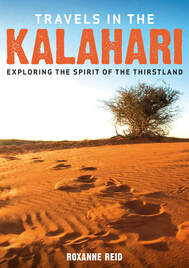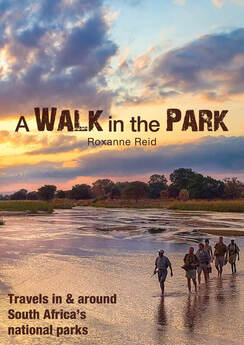[Updated May 2024]
Dominated by the white salt flats of Etosha Pan, Etosha National Park is one of southern Africa’s great safari destinations. This 22 700 square kilometre wilderness area in Namibia is home to nearly 115 species of mammals, including four of the Big Five (no buffalo). Here’s the ultimate guide to everything you need to know about Etosha.
Brief history
- The earliest human settlers in the area were nomadic Hai//omn Bushmen.
- Swedish explorer Charles Andersson and Englishman Francis Galton were the first Europeans to record the existence of Etosha Pan way back in 1851.
- German troops built the first fort at Namutoni in 1889. It was destroyed by Owambos in 1904, but rebuilt in 1905.
- The governor of South West Africa (which is what Namibia was called before its independence in 1990) proclaimed the area as a game reserve in 1907. It was named Etosha Game Park in 1958 and then proclaimed as Etosha National Park in 1967.
Getting there
There are four entrance gates into Etosha National Park, which is managed by Namibia Wildlife Resorts.
- Galton Gate about 80km north-west of Kamanjab is the most westerly entrance. This is the gate closest to Dolomite and Olifantsrus camps.
- Andersson Gate is about 140km north of Outjo (420km from Windhoek on the B1 and C38). It is only 17km from the gate to Okaukuejo camp.
- Von Lindequist Gate in the east is about 95km north-west of Tsumeb (or about 400km from Windhoek on the B1). Namutoni camp is about 12km from this gate.
- Nehale Lya Mpingana Gate in the north-east of Etosha is about 105km south-east of the town of Ondangwa. It provides an alternative route to Namutoni for those approaching from the north-west.
Find Etosha on Google Maps here.
If you fly into Windhoek airport and need to hire a vehicle to drive to Etosha, this is a useful tool for comparing rental companies and prices, especially of sedans. Some popular rental companies to consider for 4x4 campers are Avis Safari Rental, Britz, Namibia2Go and Asco Car Hire (which contributes to conservation).
The dry season is the best time for your Etosha safari, especially the months from May/June to October. Lack of rain means animals gather around the waterholes to drink, so these are the best places to park and wait for them to appear. July and August are the busiest months, with lots of foreign tourists.
The rainy months from November to April are especially good for bird-watching because this is when the summer migrants are around (they arrive around September/October). When there’s water in Etosha Pan and at Fischer’s Pan near Namutoni, you might see some of the million flamingos that breed at Etosha.
Summer months in Etosha National Park are very hot, with temperatures of up to 36-38 degrees Celsius. This is also the rainy season, so it may feel humid. Winters are mild in northern Namibia, cold at night and in the early morning but warming up nicely during the day. Average temperatures in winter are from 7-10 degrees Celsius in the early morning (requiring some winter woollies) to a pleasant 26 degrees Celsius at midday.
Is Namibia safe?
Namibia is one of the safest countries in Africa, but do keep your wits about you in the towns. For instance, don’t leave cameras and handbags visible in your vehicle, and don’t invite robbers by walking around town festooned with expensive camera equipment and your cell phone in your back pocket or open bag. Keep your vehicle doors locked at all times to avoid someone quickly opening the back door and making away with an item from the back seat before you even know what’s happened. People are poor and there is a certain amount of thievery, but you’re not generally physically at risk (although I have recently heard a few reports of attacks at coastal campsites).
In Etosha itself, the rules can be more relaxed. Don’t leave your windows open or doors unlocked when you’re not in your vehicle, but otherwise there’s no reason to fear for your safety. As for danger from animals, stick to the rules of the park and give animals enough space, especially if they have young ones with them, and there will be nothing to fear from them either.
Read my post on How to watch elephants safely in the wild.
Etosha offers a wealth of wildlife sightings, with some 115 mammal species including four of the Big Five (elephant, lion, leopard and both black and white rhino, but no buffalo). Elephant, zebra, giraffe, black-faced impala and lion are fairly common. Other species to look out for include spotted hyena, cheetah, wildebeest, black-backed jackal, honey badger and numerous species of antelope. Etosha’s largest antelope is the eland, and its smallest the tiny dik-dik (often found in the thicket as you drive toward the Klein Namutoni waterhole from Namutoni camp).
There are some 340 bird species at Etosha in summer (fewer in the winter dry season because some of them are migrants). From vultures to raptors like owls, martial, tawny and bateleur eagles, to giants like the ostrich and kori bustard, there’s much to fascinate eager birders. Colourful small birds you may spot include crimson-breasted shrike, blue waxbill, little bee-eater, African hoopoe and Meyer’s parrot.
A walk around the camps is one of the best ways to increase your count of the smaller bird species. Listen for the Namaqua sandgrouse at waterholes in the early morning and double-banded sandgrouse just after sunset; they’ll become the soundtrack to your memories of Etosha.
In summer there will usually be water in Etosha Pan after heavy rain. In the dry season between May and October, once natural water in depressions dries up, waterholes are the lifeblood for the animals. They include natural artesian wells and springs as well as man-made boreholes with solar pumps. Each is known to Etosha aficionados to be associated with consistent sightings of particular animals, from lion, elephant, rhino, giraffe and kudu to general plains game like zebra, wildebeest, gemsbok and springbok.
For a snapshot of some of the best places and what you might see at a particular waterhole if you’re patient, read my post 12 of the best waterholes at Etosha National Park, Namibia.
How long should I stay in the park?
This is a loaded question. If you’re trying to do the whole of Namibia in two weeks (something I don’t advise because the distances are huge and there’s so much to see) then you’re unlikely to devote more than two nights to Etosha. This is what many people who aren’t particularly mad about wildlife do on trips that try to cover all the highlights of Namibia in both the south and central regions and in the north.
However, if you’re a wildlife and safari nut, two nights is nowhere near enough. I’d say five nights would be a minimum, or even a week. For me, 10-12 days is ideal, allowing me to cover all parts of the park adequately. My perfect trip over 12 days would be two nights at Olifantsrus in the far west, three nights at Okaukuejo, three at Halali and four at Namutoni in the far east. Obviously, the best way to afford such a long trip is to camp. Etosha National Park camping isn’t cheap, but it’s a lot less than the chalets and rooms. (There's a link to Etosha rates at the end of the Etosha accommodation section below.)
There’s a range of Etosha National Park accommodation, from a campsite without any chalets at Olifantsrus, to the three main camps (Okaukuejo, Halali and Namutoni) that have both chalets and rooms as well as a campsite. There are also two luxury camps (no campsites) which are fully catered and offer twice daily guided game drives in their own safari vehicles. Here’s more about them all and what they offer.
Dolomite Camp
At Dolomite Camp in the far west of Etosha you stay on a dolomite hillside in permanent luxury tents with thatched roofs. This means there are a lot of ups and downs to be walked between your car, tent and the main areas, but there are 4x4 luggage carts to help out when needed. The camp is unfenced and animals may roam through the camp, so this isn’t a great choice for Nervous Nellies. Be assured, though, that if you stay alert you’re perfectly safe during the day, and you can ask for an escort after dark. Cool off in the rimflow pool in the main area (the deluxe tents also have a private plunge pool) or relax on the deck overlooking the waterhole where animals come to drink, enjoy a drink in the bar or meal in the restaurant. This is a full service camp so there’s no self-catering. Guided game drives in the camp’s vehicles go out early in the morning and again in the late afternoon; you pay separately for these drives.
This is the only dedicated campsite without any chalets in Etosha, and one of my favourites for Etosha camping. There’s a superb dual-level hide that looks out over a waterhole, a kiosk selling light meals and cold drinks, and a small elephant info centre with some fascinating posters. If you need power, specify this when you book as not all sites have power. For more about Olifantsrus and why you might like to visit, read my post Olifantsrus campsite in Etosha National Park.
Most famous for its floodlit waterhole and awesome sightings from the benches and viewing platform inside the camp, Okaukuejo is the Big Kahuna in Etosha (the largest camp and the admin HQ). The pick of the accommodation here are the waterhole chalets, but given their prime location with a view of the waterhole, they come at a premium price. At around half the price are the double rooms, and if you love to make your own braai you’ll want to book at the bush chalets, at one of the double rooms D27 to D31, or at a four-bed family chalet, which is fully equipped. The most affordable option is to camp in the campsite. That said, it’s not my favourite campsite in Etosha, being overly busy and crowded with little shade. Don’t miss climbing to the top of the water tower for a bird’s eye view of your surroundings. There’s a restaurant, fuel station, shop for basic groceries, curio shop and swimming pool.
Although Okaukuejo is most famous for its floodlit waterhole, to my mind Halali’s Moringa waterhole is even better. It’s placed next to a hill so the benches and rocks on the hillside mean that you have an amphitheatre view of the goings on at the waterhole. For your Halali accommodation, there are double rooms, bush chalets (the latter good for people who like to make their own braai rather than eat in the restaurant every night; bring your own gas cooker and pots) and fully equipped 4-bed family chalets. There’s also a large and beautiful campsite with some shade trees. Apart from the restaurant, Halali has a bar, a shop selling curios and basic groceries, a fuel station and a swimming pool.
Namutoni camp is dominated by the white fort built in 1905 that looks as if it belongs in the Sahara Desert with the French Foreign Legion. For a while its courtyard was the scene of outdoor tables for the restaurant, but the restaurant has moved back next to the shop and nothing much happens inside the fort anymore. Don’t miss a walk to the top of the tower to watch the sunset, though. For your Namutoni accommodation, choose either a double room or, for more space and privacy, a bush chalet. There is no self-catering and no braai units at Namutoni. The most budget friendly option is to book a place at the campsite, where there are trees for shade on some of the sites, and even some grassed sites. Namutoni has a floodlit waterhole next to the fort, a fuel station, restaurant, bar, shop selling curios and basic groceries, and a small museum opposite reception (although this was closed 'for renovation' on our visit in May 2022 and still closed in May 2024, with no one able to tell us when it may reopen).
Like Dolomite Camp, Onkoshi is a full-service, luxury camp. It’s 28km north of Namutoni and right on the edge of the enormous Etosha Pan, making for wonderful sunrises, sunsets and star-gazing. The camp tries to minimise impact on the environment and runs on solar power. The chalets (including a honeymoon chalet) are built on raised wooden platforms and have canvas walls and thatched roofs. All of them face the pan, which might be covered in a thin layer of water if you visit in the wet season (November to April) or be a dry white dust bowl in winter. Enjoy meals in the restaurant, drinks in the bar, a swim in the pool on a hot day, and early morning and late afternoon guided game drives, which are at an additional cost. There’s no camping or self-catering at Onkoshi.
So how much does Etosha accommodation cost? Browse the current rates for individual camps on the online booking site.
Accommodation outside Etosha
I recommend you spend at least a few nights inside the park to absorb its night-time atmosphere, especially around the camp waterholes at Okaukuejo and Halali. But if you want to spend some time outside the park too, there are many lodges and camps within easy reach of the entrance gates.
Near Andersson Gate in the south (closest to Okaukuejo):
- Etosha Safari Lodge (it has chalets and glamping tents)
- Taleni Etosha Village
- Etosha Safari Camp (it has chalets and a campsite with shade and grassed sites)
- Anderssons at Ongava
Near Von Lindequist Gate in the east (closest to Namutoni):
- Mokuti Lodge
- Mushara Lodge
- Onguma (it has chalets and luxury campsites with private ablutions)
Near Nehale Lya Mpingana Gate in the north:
Near Galton Gate in the west (closest to Dolomite Camp):
- Hobatere Lodge
Facilities
- There’s a small kiosk selling light meals at Olifantsrus, and restaurants at Okaukuejo, Halali and Namutoni. Dolomite and Onkoshi camps are full service camps with their own restaurants for residents only – and no self-catering.
- There’s a fascinating elephant information centre at Olifantsrus, a tiny info centre at Halali that’s not really worth any time, and a small museum at Namutoni (although this remains closed in May 2024).
- There are fuel pumps and shops selling basics (including firewood) at Okaukuejo, Halali and Namutoni only. Always carry cash as a backup in case their credit card machines aren’t working, which happens more regularly than one might hope.
- There’s a double-storey hide over a waterhole at Olifantsrus, and floodlit waterholes at Okaukuejo, Halali and Namutoni. Dolomite camp also has a view over a waterhole from the deck, while Onkoshi looks out over Etosha Pan. If you’re missing your Etosha fix, you can watch the webcam of the Okaukuejo waterhole on YouTube from your couch at home, although this spends quite a lot of time out of service.
- There are swimming pools at Dolomite, Okaukuejo, Halali, Namutoni and Onkoshi – all camps except Olifantsrus.
- There are about seven toilets and/or picnic sites in the park, which is not many for its size. You will need to plan your toilet breaks carefully because you’re not allowed out of your vehicle except at recognised camps, toilets and picnic sites. Most of these are long drops and can be smelly but the good news is that these are being upgraded and new ones built by July 2025.
- There's wifi at Okaukuejo, Halali and Namutoni, with hotspots at the reception and restaurant areas. If you have an MTC sim card with data, it does work in the main camps.
Things to do at Etosha National Park
1. Go on a game drive to see wildlife
2. Join a guided game drive
The main tourist camps of Okaukuejo, Halali and Namutoni offer guided drives in park vehicles in the early morning and late afternoon. This gives you a different perspective, with the guides able to interpret what you’re seeing. This makes a great introduction if it’s your first time in Etosha. If you’ve hired a small sedan to tour Etosha, the open game drive vehicles also put you higher up for better viewing. If you can only afford one guided drive, I’d say go for the late afternoon drive, because it usually comes back after dark – a time when you’re not allowed to be out of camp in your own vehicle. This gives you a chance to spot nocturnal species like black rhino, small-spotted genet, serval, African wild cat and aardwolf, not to mention lion and leopard. (Remember that there are guided drives twice a day from Dolomite and Onkoshi camps too.)
3. See Etosha Pan
4. Park off at the waterholes of Etosha
5. Spend time at Okaukuejo camp’s waterhole
6. Don’t miss a visit to Moringa waterhole, Halali
Please do NOT damage the trees at the waterhole by carving your name on them, even though some idiots have done that before you.
7. Take a walk up Halali’s twin peaks
You can see the two koppies at Halali from miles away in this flat landscape. Long before the world separated into continents, things were happening here and fossils from around 650 million years ago have been found. Take a walk up the hill to the water tower at the top, taking time to look for birds and appreciate the moringa trees that the waterhole is named after. You get a great view over the camp and out into the flat landscape of the park.
8. Visit the German fort at Namutoni
9. Watch the sunset from Namutoni’s tower
Time your climb to the top of the tower at Namutoni fort to be there to watch the sunset. You get a great view over the landscape from up there, a chance to notice just how flat and open it is. Watch the sun drop below the horizon in a blaze of colour and don’t forget to look back at the opposite eastern horizon, which reflects pink and mauve shades long after the sun has disappeared.
10. Go bird-watching
11. Look at the stars
Although there is no ‘official’ star-gazing activity with a telescope in Etosha, there’s nothing to stop you finding an open spot in any of the camps or campsites and looking up for a while to appreciate the night skies far away from Big City lights.
12. Cool off with a swim
13. Find the Dorsland trekker monument
If you’re interested in history, visit Rietfontein waterhole about 23km west of Halali (good for elephants, zebra and antelope) and take the narrow track to your left as you leave the waterhole. There’s a small gravestone here commemorating one of the Dorsland Trekkers (Thirstland Trekkers) who was buried here in 1876. It’s a reminder of the Boer emigrants of the late 19th century who endured harsh conditions when they moved with their ox wagons away from South Africa in search of somewhere where they could be independent of British colonial rule. Through disease, death and many other hardships, some of them made it to Rietfontein, where they rested before setting off for south-western Angola.
14. Enjoy a braai
If there’s nothing that makes you happier than the smell of your meat cooking on an open fire as you sip a cold beer and watch the sun set, you’re going to love the Etosha vibe. Just be careful which accommodation you book (see the Etosha accommodation section above). Since 2007 when the accommodation was updated for the park’s centenary, it’s no longer a given that you’ll be able to braai (barbecue) at all the units. Most accommodation doesn’t come with braai facilities and you’re expected to take your meals in the restaurants (with variable results). To be sure you can braai your own meat, make that very clear when you book at Okaukuejo or Halali (there are no braais at Namutoni), or book a campsite instead.
15. Visit the elephant info centre
Visit the small information centre at Olifantsrus to read about Etosha’s elephants, including the culling of more than 500 elephants in the area in the 1980s (not for sensitive minds). Take a picnic in your vehicle and outspan at one of the picnic tables in the camp to enjoy it. It’s a great stopover on the way to Okaukuejo if you enter from Galton Gate, but would be a very long drive from Okaukeujo (about 125km in each direction).
16. Pack a picnic
There are very few picnic sites in Etosha and many of them are nothing more than a fenced off patch of veld with acceptable to dodgy toilets. Good news is that these are being upgraded and some new ones built, with the construction due to be complete by July 2025. Two of my favourite picnic sites are Olifantrus camp in the far west, which has shaded tables and the added allure of the small elephant info centre (see point 15), and one off the main road between Okaukuejo and Namutoni in the east. It doesn’t have a name, so find it north east of Halali, about half way between the turnoff to the Etosha Pan lookout and Springbokfontein waterhole to the east. There are thatched shade awnings, picnic tables and flushing toilets (although it sometimes runs out of water so the toilets can't flush, which is almost worse than a long drop). There’s also a picnic area next to Olifantsbad waterhole (about 28km south-east of Okaukuejo) that is passable, but it hasn't been well maintained. As for the rest, I prefer to make a quick stop at one of the toilets for the necessary relief, and then return to a waterhole to have our picnic in the vehicle, when we can keep an eye on passing wildlife at the same time.
17. Visit a township-style shebeen for a cold one
18. Enjoy lunch at Mokuti Lodge
If you’re staying at Namutoni and are looking for a change of environment you can visit Mokuti Lodge about 4km from the Von Lindequist Gate for lunch in a peaceful green environment. The food is better here than at Namutoni’s restaurant.
- Etosha is perfectly doable for first-timers on a self-drive Namibia safari. The road network is easy to navigate and the animals fairly easy to spot in the open landscape even without the help of a guide. Reading up about the ecology and animals of the park beforehand will enhance your visit.
- The dry season months get very busy so if you want to enjoy your Namibian holidays, book your Etosha accommodation well in advance – at least 9-12 months ahead if you want a choice of where to stay. This is especially important for the dry season and the peak months of July and August.
- Visit the shop at Okaukuejo or Namutoni when you arrive to buy a brochure with map of the park and some animal and bird identification pages. These are available in English and German. This will help you plan your game drives by showing distances between the camps and waterholes.
- A reminder that if you need to hire a vehicle, you can find some options to consider in the 'Getting there' section at the beginning of this post.
- Take time to acquaint yourselves with the park rules printed on the brochure you get with your entry permit. For instance, they forbid you to be out of your car, even sitting in the window or on the roof, and expect you to be quiet at the waterholes. It is an offence to feed the animals. It is also an offence to remove any wildlife or plants from the park. The speed limit in the park is 60km/h and within the camps it’s 20km/h.
- Check the gate opening and closing times (which vary from month to month) before you go out on a game drive. The time for that particular day is clearly displayed at the entrance/exit gates of the camps. You need to allow enough time to get back to camp, no matter how exciting your sighting might be. There are heavy fines for those who get back to camp late – or you might find yourself locked out.
- If the corrugations on the gravel roads are bad when you visit, drop your tyre pressure by about 30% to make the ride softer (and do less damage to the roads). You can always have your tyres pumped up again at the fuel station at your last camp before you leave.
- Keep windows closed and doors locked. It’s not unknown for lions to open car doors with their teeth (and if you’re looking the other way, you’ll be in trouble!). Don’t lean out or sit in the windows to get a better photograph; this is against the rules for the very reason that it’s dangerous. This is not a zoo with tame animals, no matter how docile they might seem.
- Don’t approach animals too closely, especially elephants and rhinos who are likely to be offended and may fight back by ramming your vehicle. If animals start to react to your presence, you’re too close; rather back off slowly and quietly to take the stress off the animals and make it safer for yourselves as well.
- The etiquette at sightings is that you should park on the edge of the road – and parallel with it – on the side where the sighting is (even if this is the ‘wrong’ side). This leaves the other lane free for vehicles that want to pass in either direction, without obstructing your view of the wildlife. Also, please switch off your engine so that everyone can enjoy the sounds of nature.
- Never go out on a game drive without enough fuel to get to where you’re going and back again. Don’t leave filling up to the last minute; some excess is always a good idea, in case one of the fuel stations in the park runs out of fuel, then at least you won’t be stuck in camp instead of being able to enjoy your game drives.
- Carry plenty of drinking water in the car, especially when it’s hot, to prevent dehydration. Snacks are good to keep you going too.
- Tap water in the park isn’t wonderful, being brackish with lots of lime because it comes from boreholes. Notice what it does to the taps and shower heads, for instance. I’d suggest you buy mineral water (or carry your own 25-litre canisters filled up outside the park) for drinking water.
- Etosha is not a high-risk area for malaria, especially in the dry season. However, you may want to talk to your doctor or travel clinic about prophylaxis, particularly if you visit in the wetter months (November to April). And it’s always a good idea to carry mosquito repellent just in case, to wear long sleeves and long pants at dawn and dusk and to make sure your feet and ankles are covered with both socks and repellent when there are mosquitoes around.
- Toilets aren’t thick on the ground at Etosha but they are marked on the map, which is why tip 3 above is so important for planning. (That said, these toilets are being upgraded and some new ones being built, the process expected to be complete by mid 2025.) Remember you’re not allowed out of your vehicle just any-old-where in the park, even if you’re popping. Please do NOT leave your tissues or toilet paper littering the ground, in deference to other people and to the environment.
- Although you can pay for accommodation, park fees, at the shop and fuel stations in the park with your credit card, it’s best to carry some cash. Namibian dollars or South African rands, which have an equal value, are both accepted. Sometimes the credit card facilities are out of order at reception, the shop or the fuel station, and you’ll be a bit stuck if you don’t have cash. Cash is also useful to tip your guide if you go on a guided drive in the park.
- The shops in the park (at Okaukuejo, Halali and Namutoni) don’t have a wide variety of goods, but you can buy basic groceries, a limited selection of frozen meat, cold drinks, alcohol and curios. Just don’t expect fresh fruit and vegetables or even necessarily fresh bread.
- The dry season (May to October) is hell on your skin (face and body), desiccating it unless you apply lots of moisturising cream. You might want to pack some extra moisturiser if you visit during these months.
Bookings +264 61 285 7333/4 (Windhoek)
Email bookings: [email protected]
Website: Namibia Wildlife Resorts
Like it? Pin this image!
Places to visit and things to do in Namibia: south & central
Places to visit and things to do in Namibia: the north
3 Etosha camps and why they’re all worth a visit
Interesting facts about elephants
Copyright © Roxanne Reid - No words or photographs on this site may be used without permission from roxannereid.co.za
